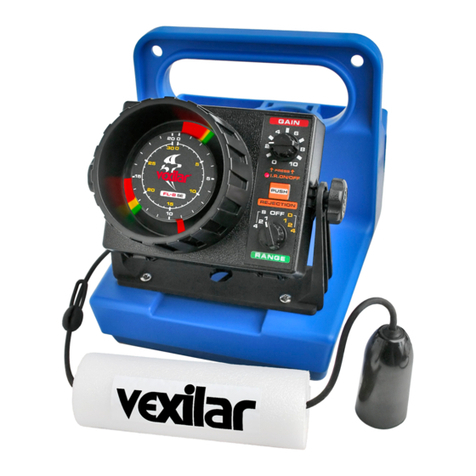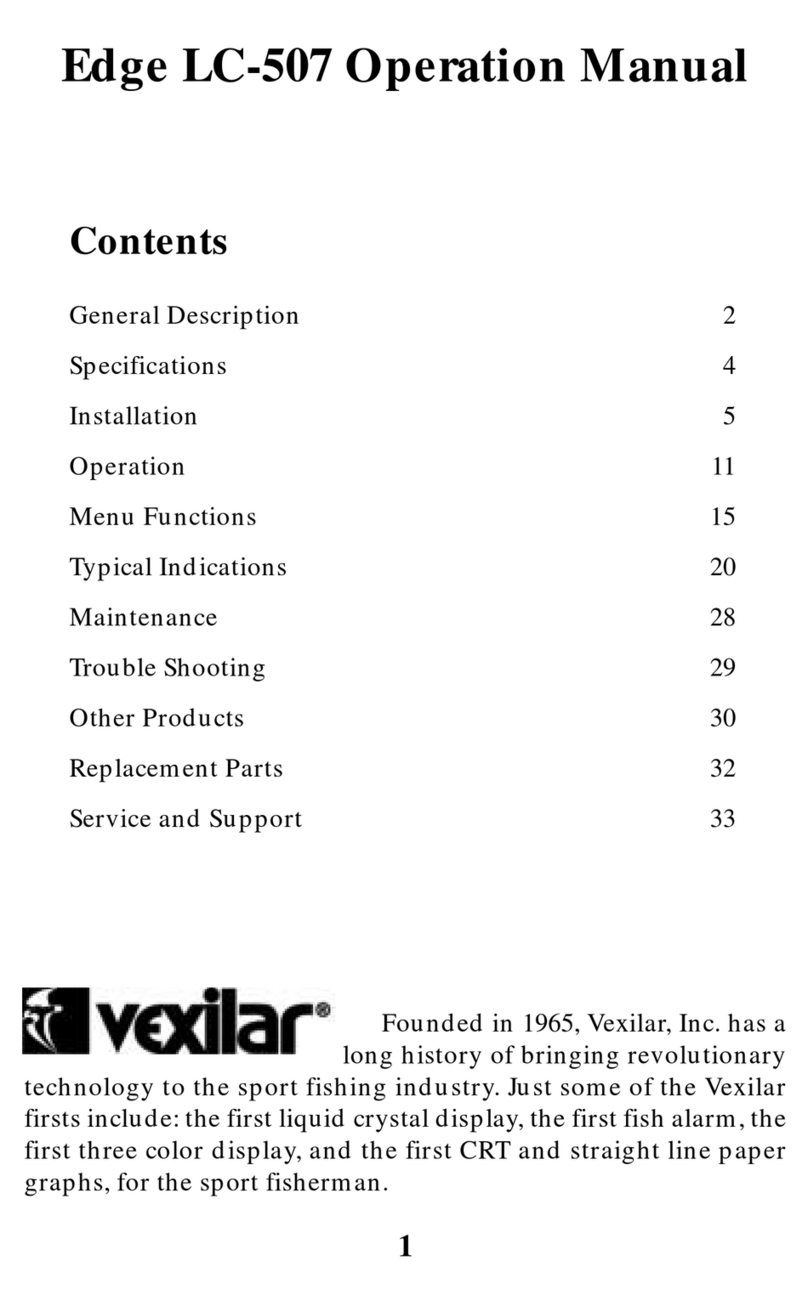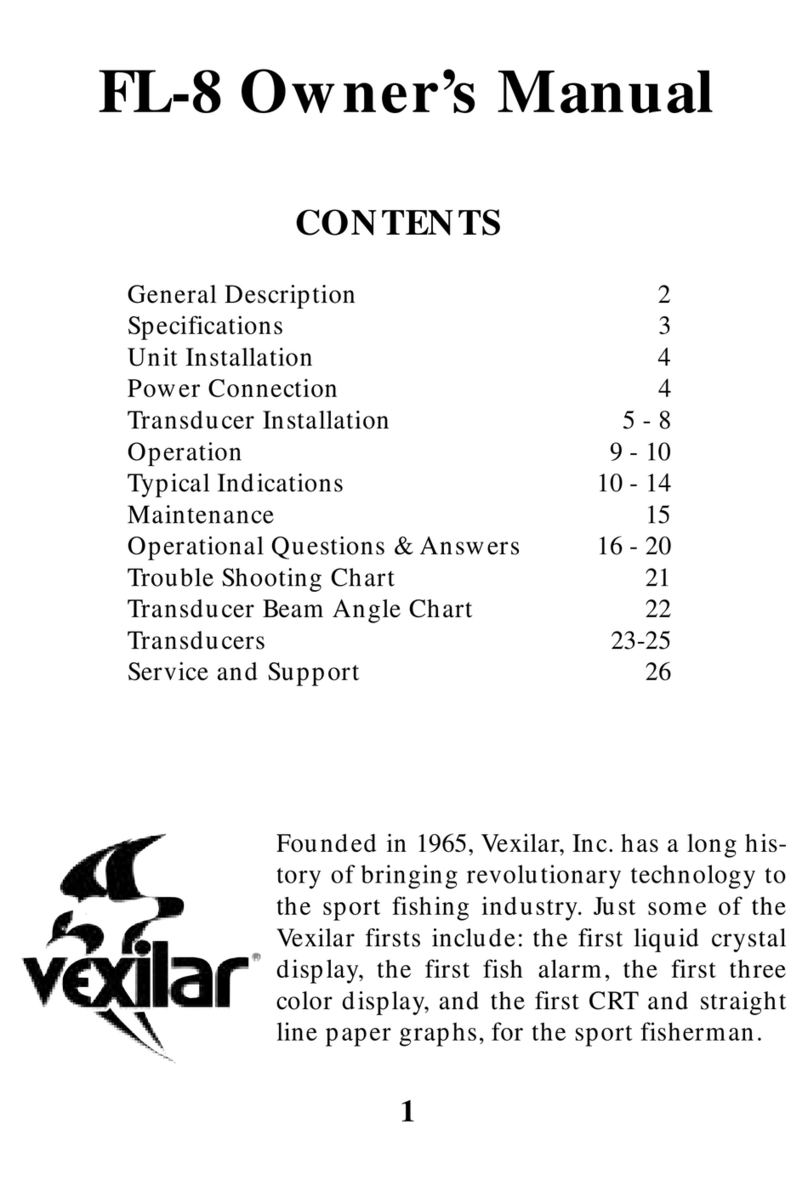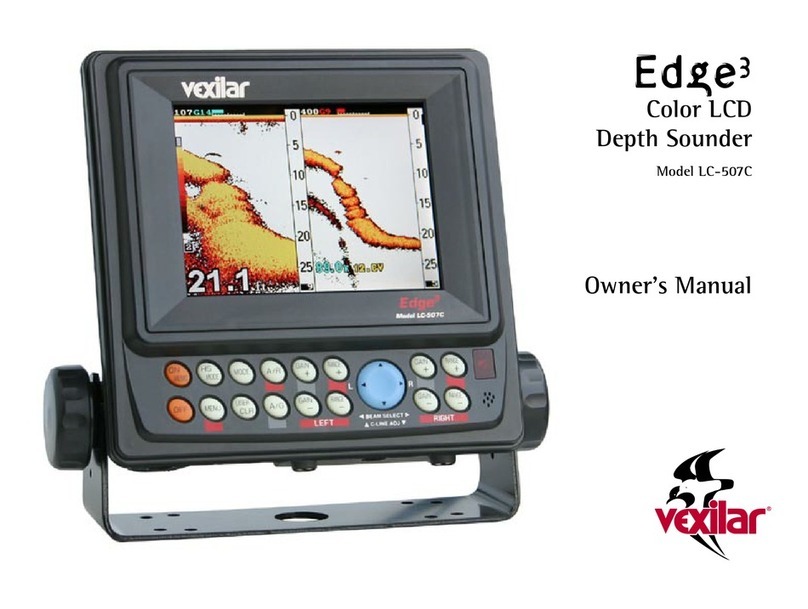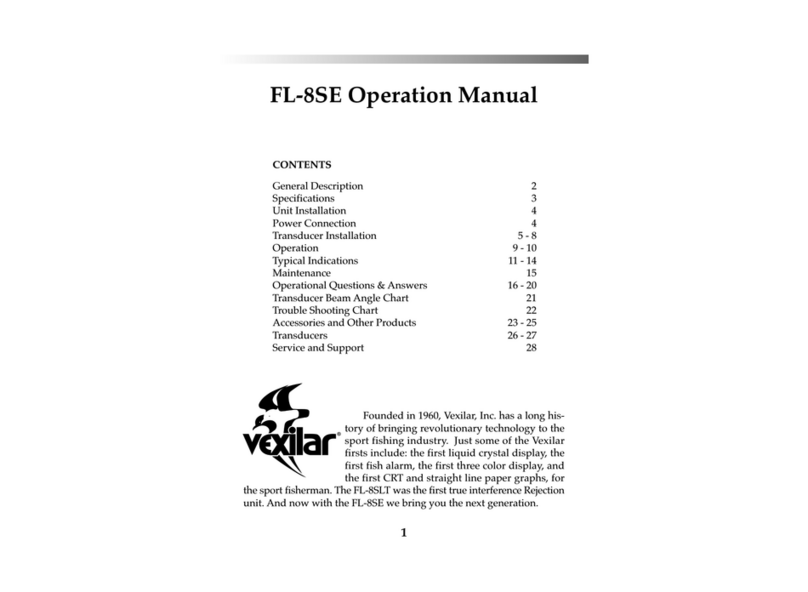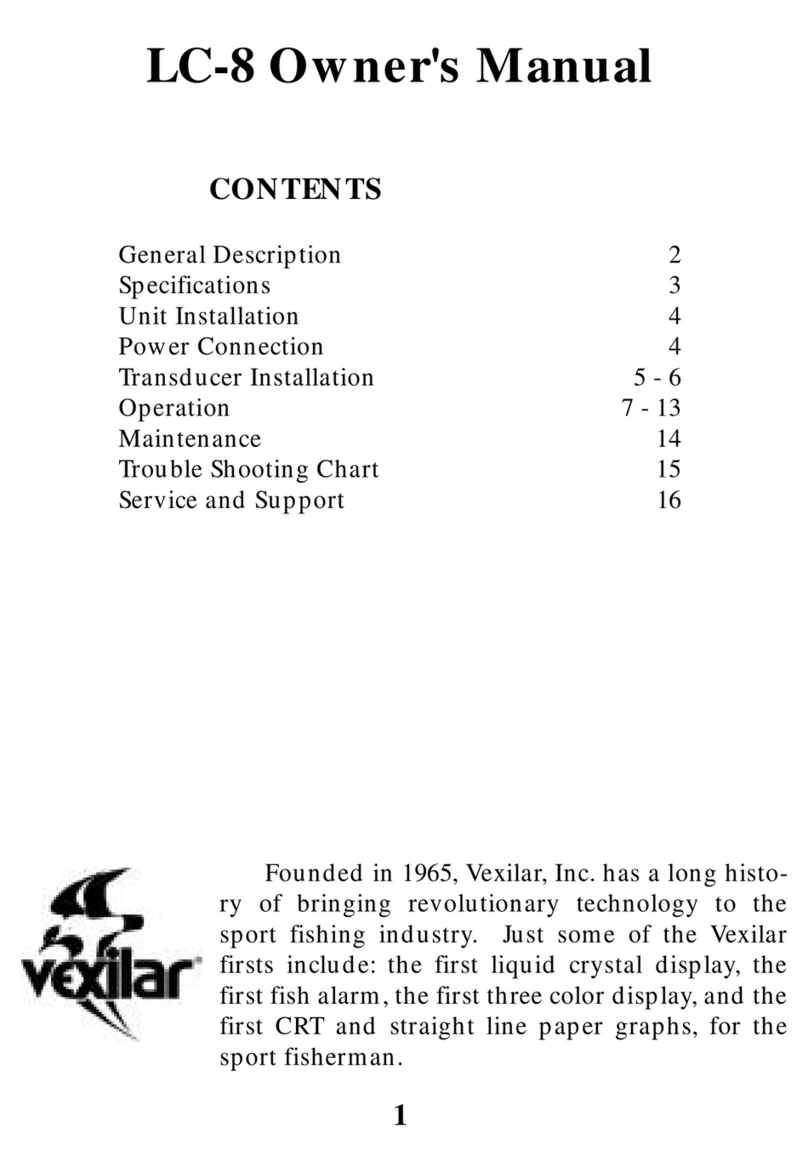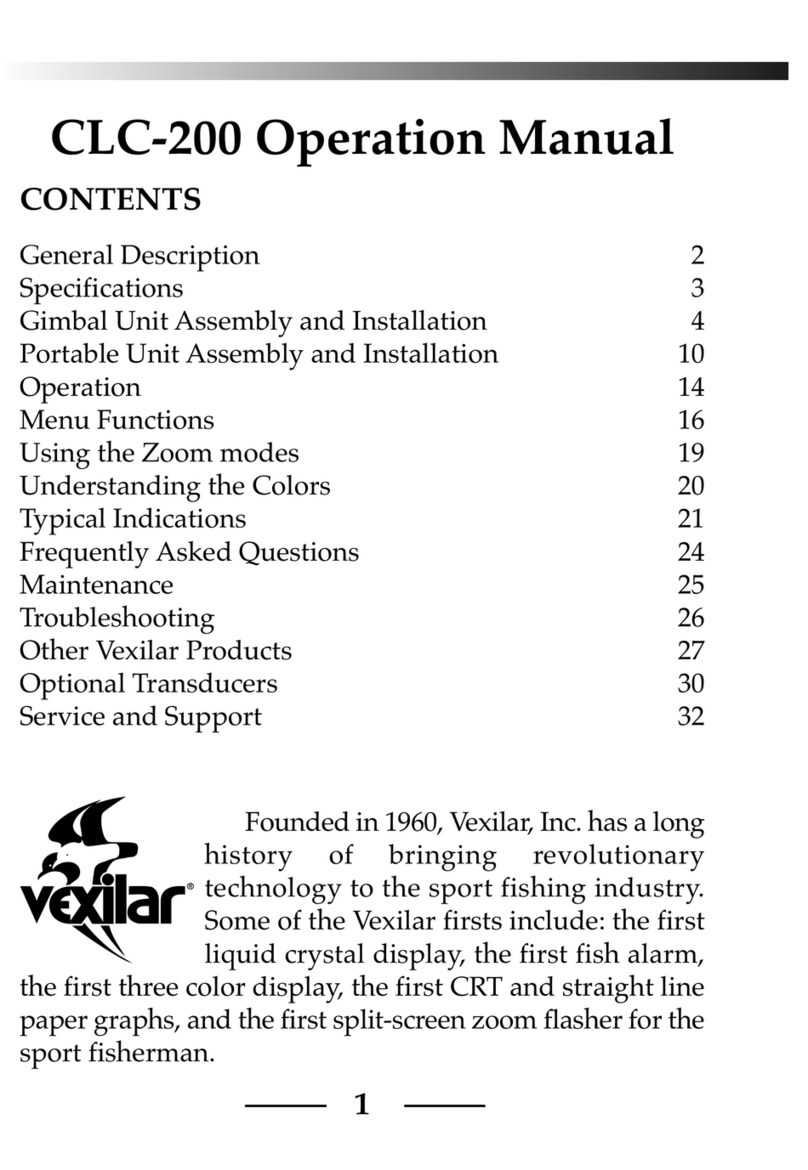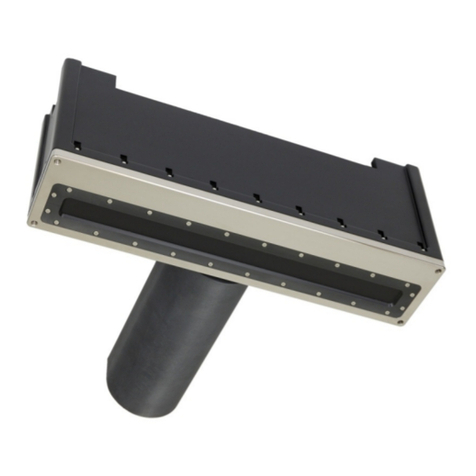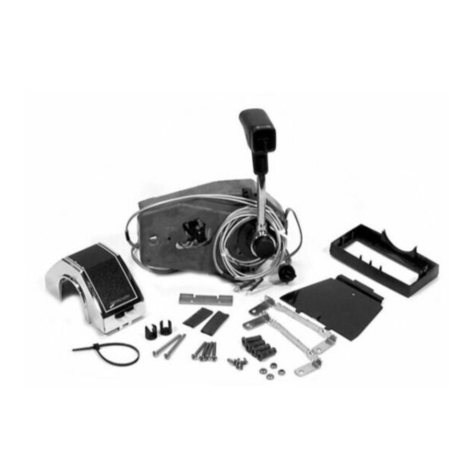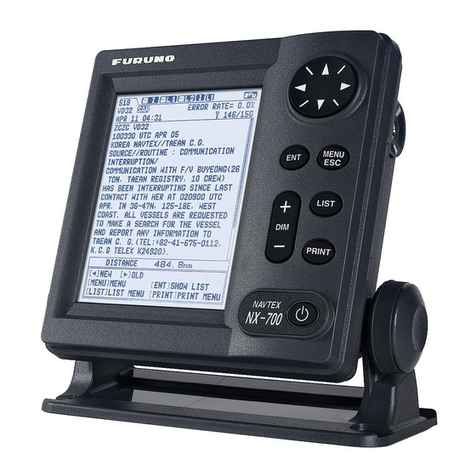8
THE ICE-DUCER™ SYSTEM*
The Ice-Ducer system provides a quick and easy way to set up the
transducer for ice fishing. All of the adjustments needed to find the true
perpendicular point are done automatically. To use the Ice-Ducer, sim-
ply adjust the transducer to the desired depth and drop the assembly in
the ice hole.
There are three main com-
ponents to the Ice-Ducer system.
They include the transducer,
float, and the stop. The trans-
ducer comes assembled with the
connector already installed. The
stop is put on by passing the
transducer cord through the slit
in the side of the stop. Make
sure that the tapered or round-
ed end is facing down, toward
the transducer. The float is
installed between the stop and
the transducer by, again, passing the transducer cord through the slit in
the side. Make sure the countersunk hole is facing up towards the top.
To use the Ice-Ducer, adjust the stop to allow the transducer to float
at the desired depth. A six inch minimum is recommended in order to
make sure that the transducer will indeed be pointing straight down.
The most it should be down is to the bottom of the ice hole. If the trans-
ducer is below the bottom of the ice it can cause tangling problems when
bringing in fish.
If you run into problems when using the Ice-Ducer and you can't see
your bait try this, rub the bottom of the transducer with water to elimi-
nate any residue or air film. This insures good contact between the trans-
ducer and the water. Check the length of cord between the float and the
transducer to make sure there are no kinks in the cord that will cause the
transducer to shoot off to the side
*Patent no. 5,546,362
